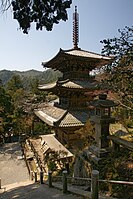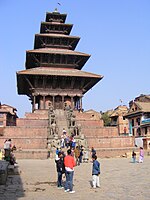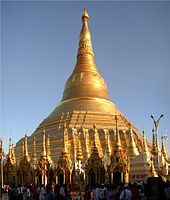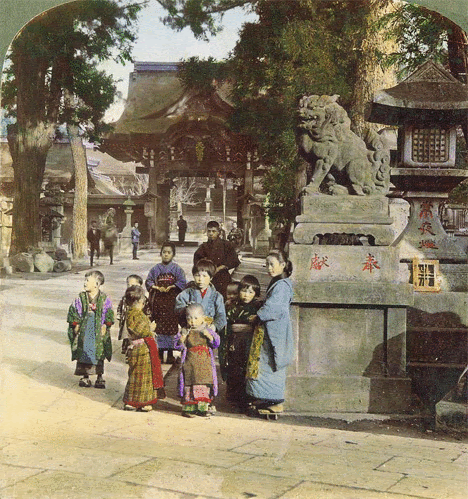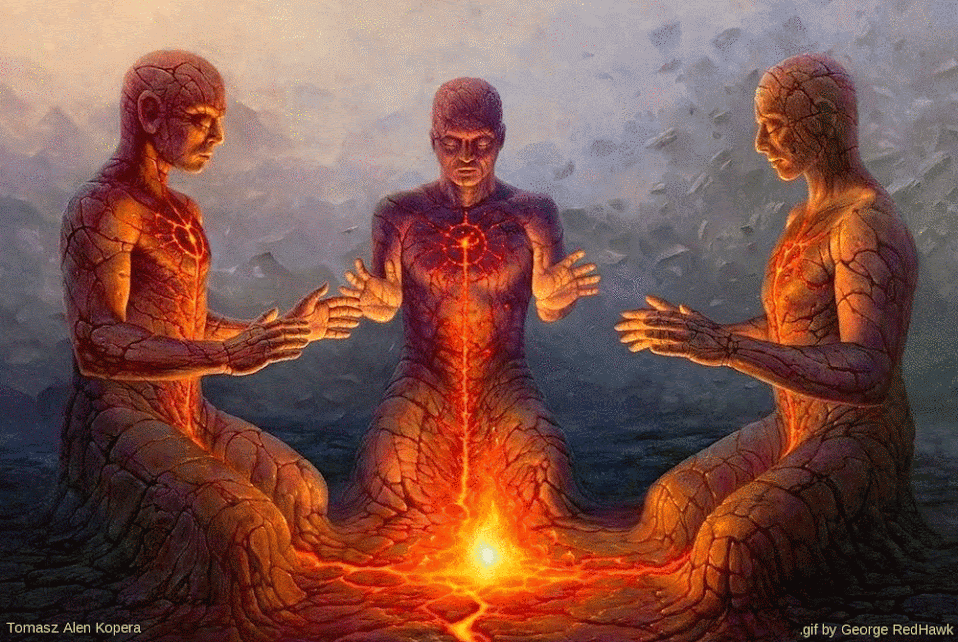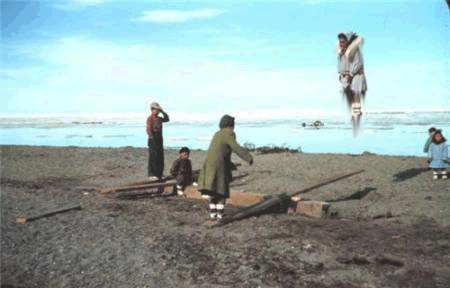List of Buddhist temples


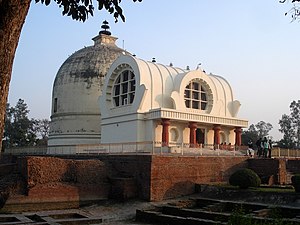
This is a list of Buddhist temples, monasteries, stupas, and pagodas for which there are Wikipedia articles, sorted by location.
AustraliaAustralian Capital Territory- Mahamevnawa Buddhist Monastery (Sri Lankan)
Queensland
South Australia
Victoria
Western Australia
Bangladesh
- Buddha Dhatu Jadi
- Somapura Mahavihara
- Shita Coat Bihar
- Jagaddala Mahavihara
- Shalban Vihara
- Vasu Vihara
- Kurjey Lhakhang - one of Bhutan’s most sacred temples - image of Guru Rinopche enshrined in rock.
- Rinpung Dzong
- Paro Taktsang (Tiger’s Nest) - perched on a 1,200 meter cliff, this is one of Bhutan’s most spectacular monasteries.
- Punakha Dzong - constructed by Zhabdrung Ngawang Namgyal in 1637-38 it is the head monastery of the Southern Drukpa Kagyu school.
Thimphu
Cambodia
Angkor
Kampong Thom
Phnom Penh
- Wat Botum
- Wat Ounalom
- Wat Moha Montrey
- Wat Phnom
- Wat Preah Keo (Silver Pagoda)
CanadaBritish Columbia
- International Buddhist Temple, Richmond
- Ling Yen Mountain Temple
- Thrangu Monastery (Richmond, British Columbia)
Ontario
- Fo Guang Shan Temple, Toronto Toronto Branch, Mississauga
- Mahamevnawa Buddhist Monastery (Theravada)
- Toronto Zen Centre
- Zen Centre of Ottawa
- Mahadhammika Temple, Toronto (Theravada)



Beijing
- Big Bell Temple (Juesheng Temple)
- Fayuan Temple
- Guanghua Temple
- Guangji Temple
- Jietai Temple
- Miaoying Temple
- Tanzhe Temple
- Temple of Azure Clouds
- Tianning Temple
- Wanshou Temple
- Yonghe Temple
- Yunju Temple
- Zhenjue Temple
- Zhihua Temple
- Cao’an (originally, a Manichaean temple)
- Guanghua Temple
- Kaiyuan Temple
- Wanfu Temple
- Guangxiao Temple (”Temple of Bright Filial Piety”)
- Hoi Tong Temple (”Ocean Banner Temple”)
- Nanhua Temple
- Temple of the Six Banyan Trees
Hebei
Henan
Hohhot
Hubei
- Guiyuan Temple in Hanyang
- Xingfu Temple destroyed; formerly in Wuchang
- Chi Lin Nunnery
- Kwan Kung Pavilion
- Po Lin Monastery
- Tsing Shan Monastery
- Tsz Shan Monastery
- Yuen Yuen Institute
- Hanshan Temple
- Huqiu Tower
- Jiming Temple
- Linggu Temple
- Qixia Temple
- Tianning Temple (天宁宝塔), Changzhou, the tallest pagoda in the world. Height: 153.8 metres (505 ft).
Ningxia
Quanzhou
Shaanxi
Shandong
Shanghai
Shanxi
Sichuan
Tibet Autonomous Region
- Ganden Monastery
- Jokhang
- Katok Monastery
- Khorzhak Monastery
- Menri Monastery
- Mindrolling Monastery
- Nechung
- Palpung Monastery
- Palyul
- Ralung Monastery
- Sakya Monastery
- Samding Monastery
- Samye
- Sera Monastery
- Shechen Monastery
- Simbiling Monastery
- Surmang
- Tashilhunpo Monastery
- Tsi Nesar
- Tsurphu Monastery
- Yerpa
Zhejiang
Europe
England
- Aruna Ratanagiri Buddhist Monastery (Harnham Buddhist Monastery), Northumberland (Thai)
- Amaravati Buddhist Monastery, Hertfordshire (Thai)
- Chithurst Buddhist Monastery (Cittaviveka), West Sussex (Thai)
- London Fo Guang Shan Temple, Marylebone, London (Chinese)
- Kadampa Buddhist Temple, Ulverston
- Mahamevnawa Buddhist Monastery, Watford, London (Sri Lankan)
- Nipponzan-Myōhōji Temple and Peace Pagoda at Willen, Milton Keynes (Japanese)
- Throssel Hole Buddhist Abbey, Northumberland
- Wat Buddhapadipa, Wimbledon, London (Thai)
- Wat Charoenbhavana, Manchester (Thai)
- Village des Pruniers; Plum Village
- Kagyu-Dzong, Paris
- Vajradhara-Ling and Temple for Peace, Aubry-le-Panthou, Normandy
- Lerab Ling, Montpellier
- Pagode de Vincennes, Bois de Vincennes
- Das Buddhistische Haus (engl.: the Buddhist house; oldest Buddhist temple in Europe)
- Mahamevnawa Buddhist Monastery, (Theravada)
- Hungarian Shaolin Temple
- Wonkwangsa International Zen Temple, Esztergom, Kwan Um School of Zen, Korean tradition
- Istituto Lama Tzong Khapa
- Santacittarama Buddhist Monastery, Poggio Nativa (Thai)
Scotland
Slovakia
- Buddhist Temple of Dzogchen Community Wangdenling
Spain
- Benalmádena Stupa, Benalmádena
- Dag Shang Kagyü, Panillo, Huesca
IndiaAndhra Pradesh
- Amaravati
- Bavikonda
- Bojjannakonda
- Nagarjunakonda
- Pavurallakonda
- Phanigiri
- Ramatheertham
- Salihundam
- Thotlakonda
Bihar
- Mahabodhi Temple Complex at Bodh Gaya
- Nalanda
- Rajgir
Buddhist caves exist in following places in Goa:
Buddha
idols have been found in several places, and some temples, some are
still in worship and are considered now as Hindu gods. Monasteries used
to exist in many places, and it can be seen from the names of the modern
villages. For example, Viharas have been found in modern Divachali or ancient Dipakavishaya, Lamgaon or ancient Lamagrama and many other places.
- Dhankar Gompa
- Gandhola Monastery
- Gemur Monastery
- Gozzangwa Monastery
- Kardang Monastery
- Key Monastery
- Kibber
- Kungri Monastery
- Lhalung Monastery
- Namgyal Monastery
- Rewalsar
- Shashur Monastery
- Tabo Monastery
- Tangyud Monastery
- Tayul Monastery
- Dzongkhul Monastery
- Ladakh
- Alchi Monastery
- Bardan Monastery
- Basgo Monastery
- Chemrey Monastery
- Diskit Monastery
- Hanle Monastery
- Hemis Monastery
- Hundur Monastery
- Korzok Monastery
- Kursha Monastery
- Lamayuru Monastery
- Likir Monastery
- Lingshed Monastery
- Mashro Monastery
- Matho Monastery
- Mulbekh Monastery
- Namgyal Tsemo Monastery
- Phugtal Monastery
- Phyang Monastery
- Rangdum Monastery
- Rizong Monastery
- Sani Monastery
- Sankar Monastery
- Shey Monastery
- Spituk Monastery
- Stakna Monastery
- Stok Monastery
- Stongdey Monastery
- Sumda Chun
- Takthok Monastery
- Thikse Monastery
- Zangla Monastery
Kerala
Madhya Pradesh
Maharashtra
- Ajanta Caves
- Aurangabad Caves
- Bedse Caves
- Bhaja Caves
- Chaitya Bhoomi
- Deekshabhoomi
- Ellora Caves
- Ghorawadi Caves
- Jogeshwari Caves
- Kanheri Caves
- Karla Caves
- Mahakali Caves
- Pandavleni Caves
- Statue of Equality
- Vishwa Shanti Stupa, Wardha
- Brahmani temple
- Dhauli
- Lalitgiri
- Marichi temple
- Puspagiri Mahavihara
- Ratnagiri (Orissa)
- Udayagiri (Orissa)
- Udayagiri and Khandagiri Caves
- Dubdi Monastery
- Enchey Monastery
- Pemayangtse Monastery
- Phensang Monastery
- Phodang Monastery
- Ralang Monastery
- Rumtek Monastery
- Tashiding Monastery
- Tsuklakhang Palace
Uttar Pradesh
- Parinirvana Stupa : Death (Nirvana) place of Gautam Buddha.
- Chaukhandi Stupa
- Dhamek Stupa
- Jetavana, Sravasti
- Kushinagar
- Sarnath
- Varanasi
- Darjeeling district
- Bhutia Busty Monastery, Darjeeling
- Ghum Monastery, Darjeeling
- Mag-Dhog Yolmowa Monastery, Darjeeling
- Tharpa Choling Monastery, Kalimpong
- Zang Dhok Palri Phodang, Kalimpong
West Java
Central Java
- Candi Borobudur
- Candi Mendut
- Candi Pawon
- Candi Kalasan
- Candi Sari
- Candi Sewu
- Candi Banyunibo
- Candi Plaosan
Bali
Israel
Japan Fukui
Fukuoka
Gifu
Hiroshima
Hyōgo
- Antai-ji
- Chōkō-ji
- Engyō-ji
- Hōrin-ji
- Hōun-ji
- Ichijō-ji
- Jōdo-ji in Ono
- Kakurin-ji in Kakogawa
- Sagami-ji
- Taisan-ji in Kobe
Kagawa
Kanagawa
Kyoto

- Adashino Nembutsu-ji
- Byōdō-in
- Chion-in (Head temple of the Jodo Shu Buddhist sect)
- Daigo-ji
- Daikaku-ji
- Daitoku-ji
- Eikan-dō Zenrin-ji
- Ginkaku-ji (Temple of the Silver Pavilion)
- Higashi-Honganji (One of two head temples of the Jōdo Shinshū Buddhist sect)
- Kinkaku-ji (Rokuonji, Deer Garden Temple, Temple of the Golden Pavilion)
- Kiyomizu-dera
- Kōdai-ji
- Kōzan-ji
- Manpuku-ji (Ōbaku temple at Uji)
- Myōshin-ji
- Nishi-Honganji (One of two head temples of the Jodo Shinshu Buddhist sect)
- Nanzen-ji
- Ninna-ji
- Ryōan-ji
- Saihō-ji
- Sanjūsangen-dō
- Tenryū-ji (major temple of the Rinzai school)
- Tōfuku-ji
- Tō-ji
Nagano
Nagasaki
Nara
- Asuka-dera
- Daian-ji
- Gangō-ji
- Hase-dera
- Hokke-ji
- Hōki-ji
- Hōryū-ji
- Kimpusen-ji
- Kōfuku-ji
- Ōminesan-ji
- Saidai-ji
- Murō-ji
- Shin-Yakushi-ji
- Taima-dera
- Tōdai-ji
- Tōshōdai-ji
- Yakushi-ji
- Shitennō-ji (the first Buddhist and oldest officially administered temple in Japan)
Shiga
- Eigen-ji
- Enryaku-ji (Temple complex on a mountain northeast of the city)
- Ishiyama-dera
- Mii-dera
Tochigi
Tokyo
Sensō-ji (Temple complex)
ToyamaWakayama
- Chōhō-ji
- Fudarakusan-ji
- Jison-in
- Mount Kōya (Temple complex)
- Negoro-ji
- Seiganto-ji
Yamaguchi
Yamanashi
Laos
Vientiane
- Pha That Luang, Vientiane
- Wat Si Saket, Vientiane
- That Dam, Vientiane
- Wat Xieng Thong, Luang Phrabang
- Buddhist Maha Vihara, Brickfields
- Sin Sze Si Ya Temple
- Thai Buddhist Chetawan Temple
- Thean Hou Temple
- Cheng Hoon Teng (oldest Buddhist temple in Malaysia)
- Xiang Lin Si Temple
- Dhammikarama Burmese Temple
- Kek Lok Si Temple (槟城极乐寺)
- Mahindarama Buddhist Temple
- Nibbinda Forest Monastery (丛林道场)
- Wat Buppharam
- Wat Chaiyamangkalaram
Perak
Pahang
Sabah
Mongolia
Övörkhangai
Selenge
Myanmar
- Yangon (Rangoon)
- Botahtaung Pagoda
- Kaba Aye Pagoda (World Peace Pagoda)
- Shwedagon Pagoda
- Sule Pagoda
- Bagan (Pagan)
- Ananda Temple
- Bupaya Pagoda
- Dhammayangyi Temple
- Dhammayazika Pagoda
- Gawdawpalin Temple
- Htilominlo Temple
- Lawkananda Pagoda
- Mahabodhi Temple
- Manuha Temple
- Mingalazedi Pagoda
- Payathonzu Temple
- Shwegugyi Temple
- Shwesandaw Pagoda
- Shwezigon Pagoda
- Sulamani Temple
- Tharabha Gate
- Thatbyinnyu Temple
- Shite-thaung Temple
- Htukkanthein Temple
- Koe-thaung Temple
- Andaw-thein Ordination Hall
- Le-myet-hna Temple
- Shwethalyaung Buddha (Reclining Buddha)
- Shwemawdaw Pagoda
Shan State
Nepal
Kathmandu District
Mustang District
Rupandehi District
- Lumbini, birthplace of Siddhartha Gautama Buddha
PhilippinesDavao
- Lon Wa Buddhist Temple, Philippines (隆華禪寺)
- Seng Guan Temple
- IBPS Manila, Philippines (Fo Guang Shan Manila) (菲律賓馬尼拉佛光山)
- World Fellowship of Buddhists, Philippines (世界佛教徒联谊会)
- Ocean Sky Chan Monastery, Philippines (海天禅寺)
Singapore
- Aaloka Buddhist Center
- Amitabha Buddhist Centre
- Bodhiraja Buddhist Society
- Buddha of Medicine Welfare Society
- Buddha Tooth Relic Temple and Museum
- Buddhist Library
- Burmese Buddhist Temple
- Cheng Beng Buddhist Society
- Dharma Drum Singapore
- Fo Guang Shan
- Foo Hai Ch’an Monastery[2]
- Hai Inn Temple
- Hua Giam Si
- Jin Long Si Temple
- Karma Kagyud Buddhist Centre
- Nyingma Kathok Buddhist Centre
- Kong Meng San Phor Kark See Temple
- Kwan Im Thong Hood Cho Temple
- Kwan Yin Chan Lin
- Nichiren Shoshu Buddhist Association (Singapore)
- Palelai Buddhist Temple
- Poh Ern Shih Temple
- Sakya Muni Buddha Gaya Temple
- Siong Lim Temple
- Sri Lankaramaya Buddhist Temple
- Thekchen Choling Tibetan Buddhist Temple
- Thian Hock Keng
- Ti-Sarana Buddhist Association
- Tzu Chi Singapore
- Vipassana Meditation Centre
- Wat Ananda Metyarama Thai Buddhist Temple
South Korea Seoul
Gyeonggi
Gangwon
North Chungcheong
South Chungcheong
North Gyeongsang
- Bunhwangsa
- Donghwasa
- Bulguksa (including Seokguram)
- Hwangnyongsa
- Jikjisa
- Ssanggyesa
- Tongdosa (one of the Three Jewel Temples)
- Haeinsa (one of the Three Jewel Temples)
- Busan
- Beomeosa
North Pyeongan
South Jeolla
- Songgwangsa (one of the Three Jewel Temples)
- Hwaeomsa
Sri Lanka
Ampara
- Magul Maha Viharaya, Lahugala
- Muhudu Maha Viharaya, Pottuvil
- Atamasthana
- Sri Maha Bodhiya
- Lovamahapaya
- Ruwanwelisaya
- Mirisaveti Stupa
- Isurumuniya
- Thuparamaya
- Lankarama
- Jetavanarama
- Abhayagiriya
- Samadhi Statue
- Sela Cetiya
Balapitiya
Colombo
- Bellanwila Rajamaha Viharaya, Bellanwila
- Buddhist Cultural Centre, Dehiwala
- Gangaramaya Temple, Colombo
Hambantota
Jaffna
Kandy
- Devanapatissa Vipassana International Meditation Centre
- Temple of the Tooth [Sri Dalada Maligawa]
Kelaniya
Kurunegala
Madampe
Mahiyanganaya
Matale
Polgahawela
Polonnaruwa
Trincomalee
Taiwan
- Chung Tai Chan Monastery (中台山), Nantou, the tallest Buddhist temple in the world. Height: 136 metres (446 ft).[3]
- Dharma Drum Mountain (Fa Gu Shan) (法鼓山), international headquarters of Dharma Drum Mountain organization
- Mengjia Longshan Temple (龍山寺)
- Fo Guang Shan (佛光山)
Thailand
- Wat Bang Nom Kho
- Wat Chaiwatthanaram
- Wat Maheyong
- Wat Niwetthammaprawat
- Wat Phra Sri Sanphet
- Wat Phanan Choeng
- Wat Ratchaburana
- Wat Yai Chai Mongkhon
- Wat Benchamabophit (marble temple)
- Wat Suthat, with Giant Swing
- Wat Ratchanadda
- Wat Phra Kaew
- Wat Pho
- Wat Arun
- Wat Paknam Bhasicharoen
- Wat Intharavihara
- Wat Saket (Golden Mount temple)
- Wat Yannawa
- Wat Aranyawiwake
- Wat Chedi Liem
- Wat Chedi Luang
- Wat Chiang Man
- Wat Doi Mae Pang
- Wat Phra Singh
- Wat Phrathat Doi Suthep
- Wat Umong
 https://www.revolvy.com/main/index.php?s=Pagoda
https://www.revolvy.com/main/index.php?s=PagodaPagoda


A pagoda is a tiered tower with multiple eaves, built in traditions originating as stupa in historic South Asia[1][2] and further developed in East Asia or with respect to those traditions, common to Nepal, China, Japan, Korea, Vietnam, Myanmar, India, Sri Lanka and other parts of Asia. Some pagodas are used as Taoist houses of worship. Most pagodas were built to have a religious function, most commonly Buddhist, and were often located in or near viharas. In some countries, the term may refer to other religious structures. In Vietnam and Cambodia, due to French translation, the English term pagoda is a more generic term referring to a place of worship,
although pagoda is not an accurate word to describe a Buddhist vihara.
The modern pagoda is an evolution of the stupa which originated in ancient India.[3][4][1] Stupas are a tomb-like structure where sacred relics could be kept safe and venerated.[5]
The architectural structure of the stupa has spread across Asia, taking
on many diverse forms as details specific to different regions are
incorporated into the overall design.
One proposed etymology is from a South Chinese pronunciation of the term for an eight-cornered tower, Chinese: 八角塔, and reinforced by the name of a famous pagoda encountered by many early European visitors to China, the “Pázhōu tǎ” (Chinese: 琶洲塔), standing just south of Guangzhou at Whampoa Anchorage.[6] Another proposed etymology is Persian butkada, from but, “idol” and kada, “temple, dwelling.”[7]
Another etymology, found in many English language dictionaries, is modern English pagoda from Portuguese (via Dravidian), from Sanskrit bhagavati, feminine of bhagavat, “blessed”, from bhag, “good fortune”.
Yet
another etymology of pagoda is from the Sinhala word dāgaba which is
derived from Sanskrit dhātugarbha or Pali dhātugabbha: “relic
womb/chamber” or “reliquary shrine”, i.e. a stupa, by way of Portuguese.[8]
The origin of the pagoda can be traced to the stupa (3rd century BCE).[9] The stupa, a dome shaped monument, was used as a commemorative monument associated with storing sacred relics.[9] In East Asia, the architecture of Chinese towers and Chinese pavilions
blended into pagoda architecture, eventually also spreading to
Southeast Asia. The pagoda’s original purpose was to house relics and
sacred writings.[10] This purpose was popularized due to the efforts of Buddhist missionaries, pilgrims, rulers, and ordinary devotees to seek out, distribute, and extol Buddhist relics.[11]
On the other side, the stupa emerged as a distinctive style of Newa architecture of Nepal and was adopted in Southeast and East Asia. Nepali architect Araniko visited China and shared his skills to build stupa buildings in China.[12][13]
These buildings (pagoda, stupa) became prominent as Buddhist monuments used for enshrining sacred relics.[9]
SymbolismChinese iconography is noticeable in Chinese pagoda as well as other East Asian pagoda architectures. The image of Gautama Buddha in the abhaya mudrā is also noticeable in some Pagodas. Buddhist iconography can be observed throughout the pagoda symbolism.[14]
In an article on Buddhist elements in Han dynasty art, Wu Hung suggests that in these tombs, Buddhist symbolism was so well-incorporated into native Chinese traditions that a unique system of symbolism had been developed.[15]
ArchitecturePagodas attract lightning strikes because of their height. Many pagodas have a decorated finial
at the top of the structure, and when made of metal, this finial,
sometimes referred to as a “demon-arrester”, can function as a lightning
rod. Also Pagodas come in many different sizes, as some may be small
and others may be large.[16]
Pagodas traditionally have an odd number of levels, a notable exception being the eighteenth century pagoda designed by Sir William Chambers at the Royal Botanic Gardens, Kew, London.
The pagodas in Myanmar, Thailand, Laos and Cambodia are very different from Chinese and Japanese pagodas. Pagodas in those countries are derived from Dravidian architecture.[17]
Some notable pagodasTiered towers with multiple eaves:
- Songyue Pagoda on Mount Song, Henan, China, built in 523.
- Mireuksa at Iksan, Korea, built in the early 7th century.
- Bunhwangsa at Gyeongju, Korea, built in 634.
- Xumi Pagoda at Zhengding, Hebei, China, built in 636.
- Daqin Pagoda in China, built in 640.
- Hwangnyongsa Wooden nine-story pagoda on Hwangnyongsa, Gyeongju, Korea, built in 645.
- Pagoda at Hōryū-ji, Ikaruga, Nara, Japan, built in the 7th century.
- Giant Wild Goose Pagoda, built in Xi’an, China in 704
- Small Wild Goose Pagoda, built in Xi’an, China in 709.
- Seokgatap on Bulguksa, Gyeongju, Korea, built in 751.
- Dabotap on Bulguksa, Gyeongju, Korea, built in 751.
- Tiger Hill Pagoda, built in 961 outside of Suzhou, China
- Lingxiao Pagoda at Zhengding, Hebei, China, built in 1045.
- Iron Pagoda of Kaifeng, built in 1049, during the Song dynasty.
- Liaodi Pagoda of Dingzhou, built in 1055 during the Song dynasty
- Pagoda of Fogong Temple, built in 1056 in Ying County, Shanxi, China.
- Pizhi Pagoda of Lingyan Temple, Shandong, China, 11th century.
- Beisi Pagoda at Suzhou, Jiangsu, China, built in 1162.
- Liuhe Pagoda of Hangzhou, built in 1165, during the Song dynasty.
- Ichijō-ji, Kasai, Hyōgo, Japan, built in 1171.
- The Porcelain Tower of Nanjing, built between 1402 and 1424, a wonder of the medieval world in Nanjing, China.
- Tsui Sing Lau Pagoda in Ping Shan, Hong Kong, built in 1486.
- Dragon and Tiger Pagodas in Kaohsiung, Taiwan, built in 1976.
- Seven-storey Pagoda in Chinese Garden at Jurong East, Singapore, built in 1975.
- Pazhou Pagoda on Whampoa (Huangpu) Island, Guangzhou (Canton), China, built in 1600.
- Pagoda of the Celestial Lady, in Huế, Vietnam, built in 1601.
- Palsangjeon, a five-story pagoda at Beopjusa, Korea built in 1605.
- Tō-ji, the tallest wooden structure in Kyoto, Japan, built in 1644.
- Nyatapola at Bhaktapur, Kathmandu Valley built during 1701–1702.
- The Great Pagoda at Kew Gardens, London, UK, built in 1762.
- Trấn Quốc Pagoda, Hanoi, Vietnam, founded in the sixth century.
- Reading Pagoda of Reading, Pennsylvania, built in 1908.
- Kek Lok Si’s main pagoda in Penang, Malaysia, exhibits a combination of Chinese, Burmese and Thai Buddhist architecture, built in 1930.
- The pagoda of Japan Pavilion at Epcot, Florida, built in 1982.
- Pagoda of Tianning Temple, the tallest pagoda in the world since its completion in April 2007, stands at 153.7 m in height.
- Nepal Peace Pagoda in Brisbane, Australia built for the World Expo ‘88.
Stupas called “pagodas”:
- Global Vipassana Pagoda, the largest unsupported domed stone structure in the world.
- Mingun Pahtodawgyi, a monumental uncompleted stupa began by King Bodawpaya in 1790. If completed, it would be the largest in the world at 150 meters.
- Pha That Luang, the holiest wat, pagoda, and stupa in Laos, in Vientiane
- Phra Pathommachedi the highest pagoda or stupa in the world Nakhon Pathom, Thailand.
- Shwedagon Pagoda, a 98-metre (322 ft) gilded pagoda and stupa located in Yangon, Myanmar. It is the most sacred Buddhist pagoda for the Burmese with relics of the past four Buddhas enshrined within.
- Shwezigon Pagoda in Nyaung-U, Myanmar. Completed during the reign of King Kyanzittha in 1102, it is a prototype of Burmese stupas.
- Uppatasanti Pagoda, a 325-foot tall landmark in Naypyidaw, Myanmar, built from 2006 to 2009, which houses a Buddha tooth relic.
Places called “pagoda” but which are not tiered structures with multiple eaves:
- One Pillar Pagoda: Hanoi, Vietnam, is an icon of Vietnamese culture; it was built in 1049, destroyed, and rebuilt in 1954.
Structures that evoke pagoda architecture:
- The Dragon House of Sanssouci Park, which is an eighteenth-century German attempt at imitating Chinese architecture.
- The Panasonic Pagoda, or Pagoda Tower, at the Indianapolis Motor Speedway. This 13-story pagoda, used as the control tower for races such as the Indy 500, has been transformed several times since it was first built in 1913.[18]
- Jin Mao Tower in Shanghai, built between 1994 and 1999.
- Petronas Towers in Kuala Lumpur, the tallest buildings in the world from 1998 to 2004
- Taipei 101 in Taiwan, record setter for height (508m) in 2004 and currently the world’s fourth tallest completed building.
Structures not generally thought of as pagodas, but which have some pagoda-like characteristics:
- The Hall of Prayer for Good Harvests at the Temple of Heaven
- Wongudan Altar in Korea
-
The Iron Pagoda of Kaifeng, China, built in 1049
-
Five-story pagoda of Mount Haguro, Japan
-
Wooden three-story pagoda of Ichijō-ji in Japan, built in 1171
-
The nine-story Xumi Pagoda, Hebei, China, built in 636
-
Taipei 101 in Taipei, Taiwan
-
The Bombardier Pagoda at the Indianapolis Motor Speedway
-
Shwedagon Pagoda located in Yangon, Myanmar. The whole structure is coated with 60 tons of pure gold
- Architecture of the Song Dynasty
- Cetiya
- Chaitya
- Chinese architecture
- Ta - Chinese pagodas
- Gongbei – Chinese Muslim mausoleum with pagoda-style architecture
- Stupa
- Tō – Japanese pagodas
- Vihara
- “The Origin of Pagodas”. China.org.cn. 2002-09-19. Retrieved 2017-01-23.
- “Pagoda”. Webpages.uidaho.edu. Retrieved 2017-01-23.
- “DEVELOPMENT OF STUPA ARCHITECTURE IN INDIA” (PDF). Shodhganga.inflibnet.ac.in. Retrieved 2017-01-23.
- “The stupa (article)”. Khan Academy. Retrieved 2017-01-23.
- The Columbia Encyclopedia, Sixth Edition. Columbia University Press
- Chinese
Origin of the Term Pagoda: Liang Sicheng’s Proposed Etymology Authors:
David Robbins Tien, Gerald Leonard Cohen Publication: Arts, Languages
and Philosophy Faculty Research & Creative Works DownloadTien, D.
R., & Cohen, G. L. (2017) http://scholarsmine.mst.edu/artlan_phil_facwork. David Robbins Tien. Comments on Etymology, October 2014, Vol.44, no. 1, pp. 2–6. - Random House Unabridged Dictionary, Second Edition. Random House, New York, 1993.
- Hobson-Jobson:
The Anglo-Indian Dictionary by Henry Yule & Arthur Coke Burnell,
first printed 1896, reprinted by Wordsworth Editions, 1996, p. 291.
Online Etymology Dictionary by Douglas Harper, s.v. pagoda, at http://www.etymonline.com/ (Accessed 29 April 2016) - Editors, The (2012-01-26). “pagoda | architecture”. Britannica.com. Retrieved 2017-01-23.
- A World History of Architecture. Michael W. Fazio, Marian Moffett, Lawrence Wodehouse. Published 2003. McGraw-Hill Professional. ISBN 0-07-141751-6.
- The Impact of Buddhism on Chinese Material Culture. John Kieschnick. Published 2003. Princeton University Press. ISBN 0-691-09676-7.
- “Nepal, China commemorate 57-year-long friendship - China News”. SINA English. Retrieved 2017-01-23.
- The Evolution of Indian Stupa Architecture in East Asia. Eric Stratton. New Delhi, Vedams, 2002, viii, ISBN 81-7936-006-7
- The Impact of Buddhism on Chinese Material Culture. John Kieschnick. Published 2003. Princeton University Press. ISBN 0-691-09676-7. page 83
- The Impact of Buddhism on Chinese Material Culture. John Kieschnick. Published 2003. Princeton University Press. ISBN 0-691-09676-7. page 84
- Terry, T. Philip (1914). Terry’s Japanese Empire. Houghton Mifflin. p. 257.
- Chihara, Daigorō (1996). Hindu-Buddhist Architecture in Southeast Asia. BRILL. p. 28. ISBN 90-04-10512-3.
- [1]
- The Impact of Buddhism on Chinese Material Culture. John Kieschnick. Published 2003. Princeton University Press . ISBN 0-691-09676-7.
- A World History of Architecture. Michael W. Fazio, Marian Moffett, Lawrence Wodehouse. Published 2003. McGraw-Hill Professional. ISBN 0-07-141751-6.
- Psycho-cosmic symbolism of the Buddhist stupa. A. B. Govinda. 1976, Emeryville, California. Dharma Publications.
| Wikimedia Commons has media related to Pagodas. |
 Buddha
Buddha
China Pavilion at Epcot

The China Pavilion is a Chinese-themed pavilion that is part of the World Showcase within Epcot at Walt Disney World in Orlando, Florida, United States. Its location is between the Norwegian and German pavilions.[1]
Layout
Visitors enter the China Pavilion through a large Chinese gate. The courtyard is dominated by a replica of the Temple of Heaven, which contains the entrance to “Reflections of China“,
a Circle-Vision 360° movie exploring China’s history and scenery, as
well as a museum containing several ancient Chinese artifacts. The
courtyard is bordered by shops selling Chinese merchandise, and two
Chinese restaurants.[2] The pavilion is decorated with ponds, crossed by bridges. Chinese acrobats also perform frequently in the pavilion.[3]
The pavilion served as the backdrop for the music video of the song “Reflection“, performed by a then-unknown Christina Aguilera, from the 1998 Disney film Mulan.[4]
Attractions and servicesAttractions
- Reflections of China
- Agent P World Showcase Adventure (June 23, 2012 – present)
Shopping
- Good Fortune Gifts, sells a variety of items including parasols, puppets, and toys.
- House of Good Fortune, sells items such as housewares, tea sets, wall prints, silk robes, and porcelain goods.
Dining
- Nine Dragons Restaurant, a full-service gourmet Chinese restaurant featuring traditional Chinese cuisine with a twist.
- Lotus Blossom Cafe, a counter-service restaurant that serves well-known American-Chinese dishes.
Live entertainment
- Dragon Legend Acrobats, a team of young acrobats who perform feats in the outdoor courtyard.
Character Meet & Greets
- Mulan, Mushu, and Captain Li Shang.
Gallery
-
Pagoda with lions in the front
References
- China in Epcot. All Ears. Accessed March 31, 2012.
- “360 Degrees of China”. Today at Disney. May 22, 2016. Retrieved June 21, 2016.


































iOS Web App
This
is a work in progress. The Tipiṭaka (Mūla) is available for all the
scripts, and the Aṭṭhakathā is available for the Roman script.
To install the Pāḷi Tipiṭaka web app on your iPhone, iPod Touch, or iPad go to tipitaka.org/ios, and then follow the steps below for iPhone & iPod Touch and iPad.
iPad
Click on the icon at the top of the screen as shown below.

Click on the “Add to Home Screen” button.

Click on the “Add” button.

The Pāḷi Tipiṭaka icon will now appear on your iPad’s home screen.

iPhone & iPod Touch
Click on the icon at the bottom center of the screen as shown below.

Click on the “Add to Home Screen” button.

Click on the “Add” button.

The Pāḷi Tipiṭaka icon will now appear on your iPhone’s or iPod Touch’s home screen.

|date= (help)|accessdate= (help)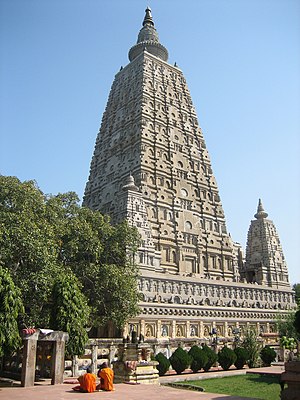

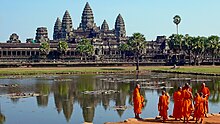


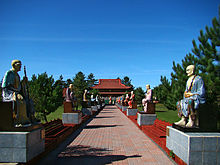







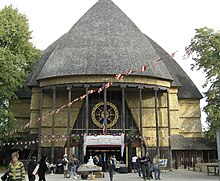

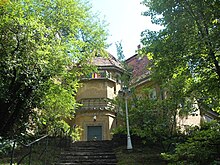


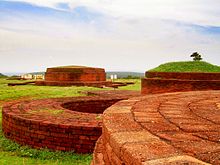
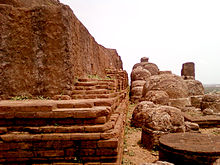


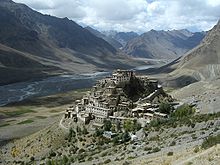




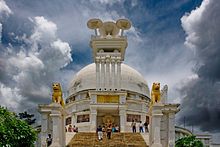


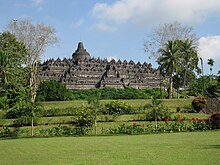

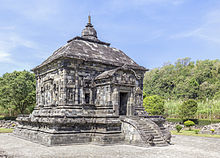

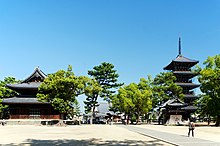




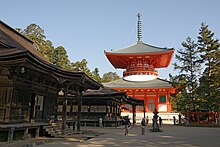
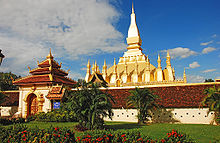






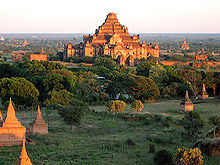


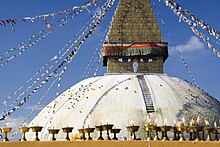

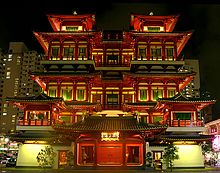
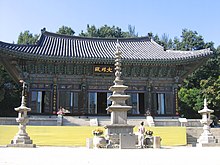




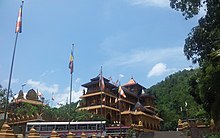
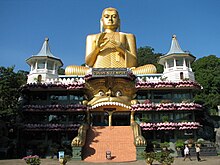
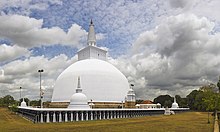





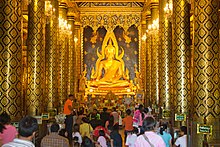




 Content from
Content from 




